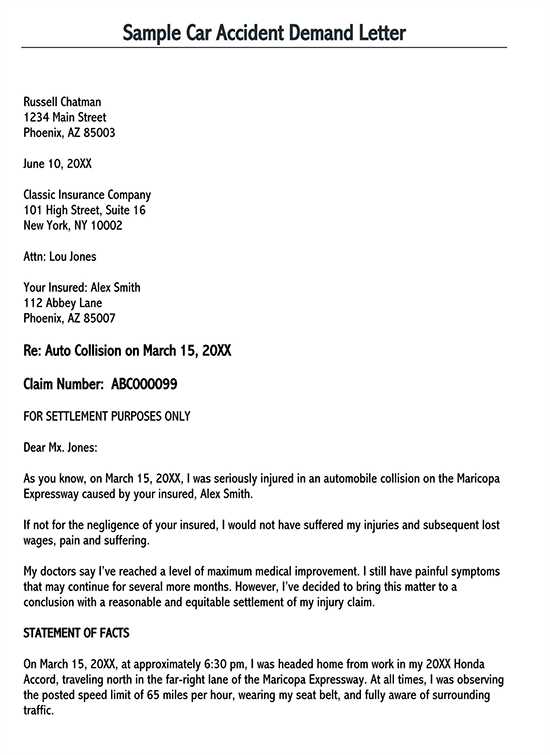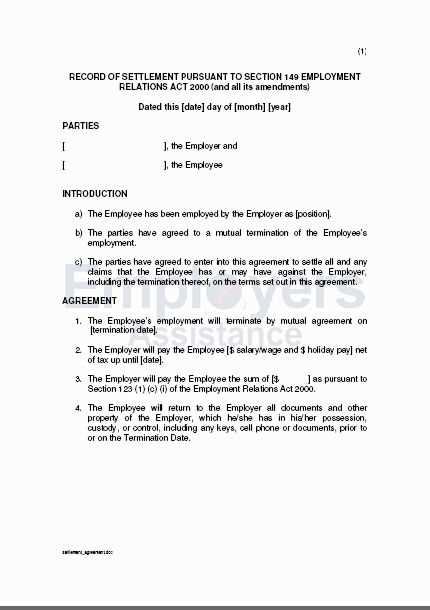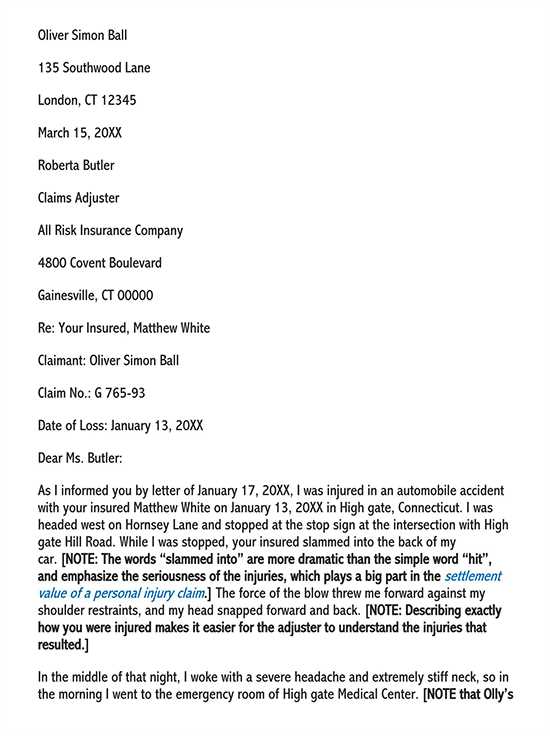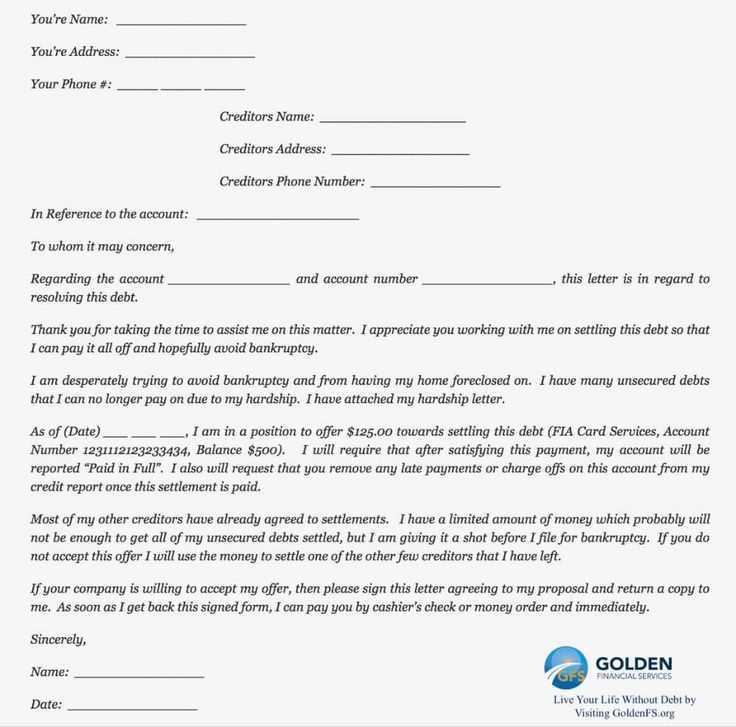Car Accident Settlement Letter Template Guide

When it comes to resolving disputes related to physical harm or property damage, having a structured approach is crucial. Crafting a formal document helps clarify your position and outlines the desired resolution. This written communication serves as an essential tool for addressing the issue directly with the responsible party or their insurance provider.
Key Components to Include in Your Document

Ensure your communication covers all necessary aspects to make your case compelling and clear. Here are the main elements to include:
- Introduction: Begin by stating the purpose of your communication and briefly describing the situation at hand.
- Details of the Incident: Outline the events leading up to the dispute, providing specific dates, times, and locations.
- Damages and Losses: Describe the damages or losses sustained, including financial costs and physical impacts.
- Desired Outcome: Clearly state what you are seeking as a resolution–whether it’s financial compensation or repair services.
- Supporting Documentation: Include relevant documents like photos, police reports, or medical records to strengthen your case.
Structure and Tone
Maintaining a professional tone throughout the document is essential. The structure should follow a logical flow, starting from an introduction to the issue and progressing through the necessary details and the resolution you seek.
Opening and Conclusion
In the introduction, briefly state your position without excessive detail. The conclusion should be polite yet firm, requesting a response within a reasonable timeframe.
How to Avoid Common Pitfalls
To avoid miscommunication or legal complications, steer clear of vague language and overly emotional tones. Stick to facts and keep the focus on the resolution you are seeking.
Example of a Claim Communication

Here’s a simplified example of how such a document might appear:
- Dear [Recipient’s Name],
- On [Date], an incident occurred at [Location] resulting in [brief description of damages]. I am requesting [details of resolution] to settle this matter.
- Attached, you will find [list of supporting documents]. Please contact me at your earliest convenience to discuss this further.
Creating a Formal Claim Document

When addressing a situation involving damages or harm, a well-structured communication plays a pivotal role in resolving disputes. By clearly stating your claims and expectations, you enhance the possibility of reaching an amicable solution. This section will guide you through the process of drafting an effective formal document, ensuring all necessary components are included and arranged logically.
Key Elements to Incorporate
To strengthen your position and present a comprehensive request, include the following details:
- Introduction: Start with a polite greeting and a concise statement of your intention. Mention the event briefly without excessive detail.
- Incident Details: Provide factual descriptions of the event, including the time, date, location, and circumstances surrounding the incident.
- Impact and Losses: Highlight the specific damages or losses incurred, ensuring you include any financial implications or physical effects.
- Requested Resolution: Clearly outline the desired outcome, whether it’s compensation or corrective measures. Be specific about your expectations.
- Supporting Evidence: Attach relevant documents that support your claims, such as photos, invoices, or medical reports, to provide a stronger case.
How to Structure Your Document Effectively
Keep your communication professional and organized. Start with a clear introduction, follow with a detailed explanation of the situation, and conclude with your request. This logical flow ensures your message is easy to follow and leaves no room for ambiguity.
Common Mistakes to Avoid
Avoid being vague or overly emotional in your writing. Focus on facts and stick to the issue at hand. Make sure to proofread your communication for any spelling or grammatical errors, as these can undermine your professionalism.
Optimal Timing for Sending the Document
Timing is essential when sending your formal communication. It’s crucial to act promptly after the event but also ensure you’ve gathered all necessary information and documentation before proceeding.
Legal Considerations
Be mindful of any legal requirements or restrictions regarding your communication. This includes knowing the proper procedure for submitting your claims and understanding the time limits for initiating any legal action if necessary.
Sample Example
Below is a brief example of how such a document might be structured:
- Dear [Recipient’s Name],
- On [Date], an unfortunate event occurred at [Location], resulting in [brief description of damages]. I am requesting [desired resolution] to address this matter.
- Please find attached supporting documents such as [list of documents]. I look forward to hearing from you soon.